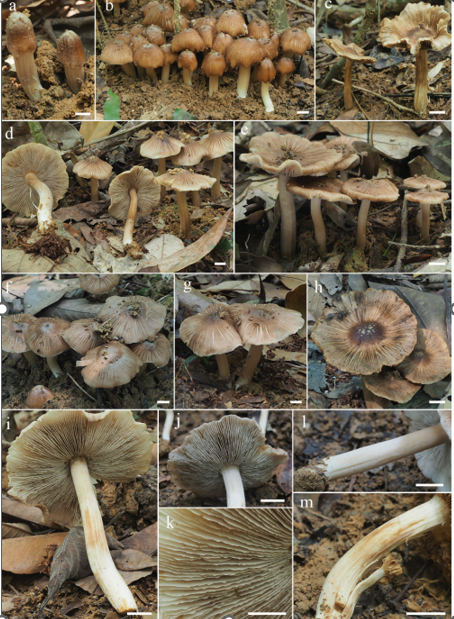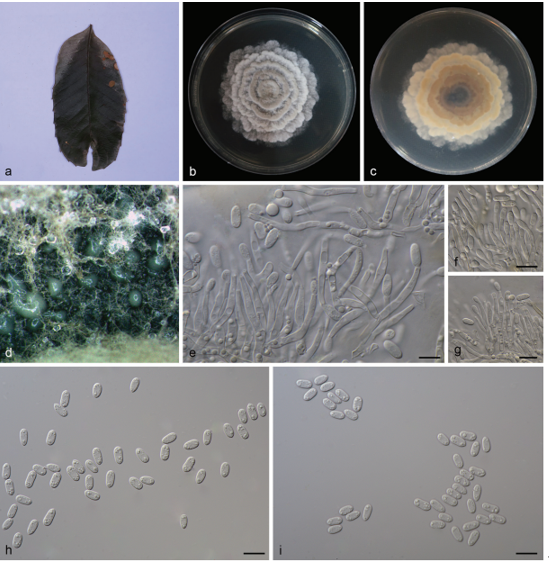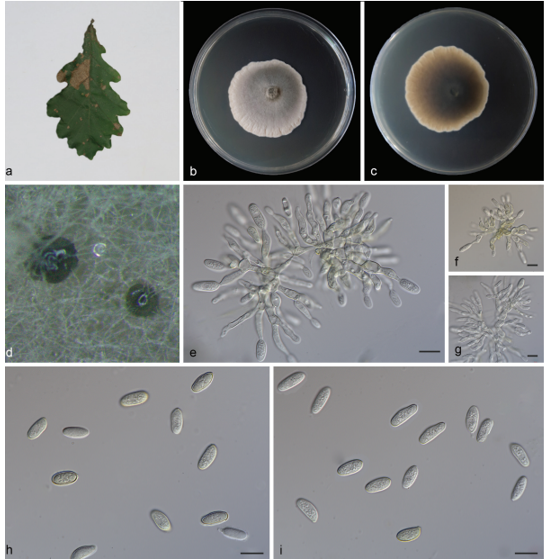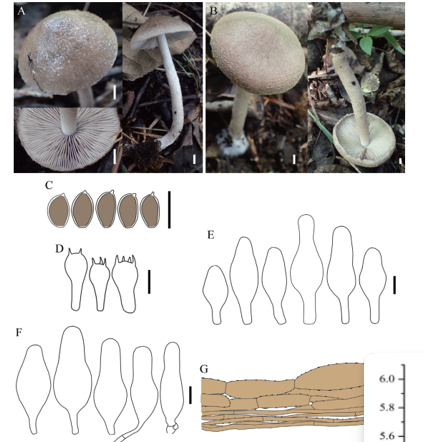Acrocordiella yunnanensis L.S. Dissan & J.C. Kang, sp. nov. 2021
Index Fungorum Number: IF556940, Facesoffungi number: FoF 09458
Holotype: The specimens were collected from dead twigs of an undetermined plants from Menghai County, Xishuangbanna, Yunnan Province, during December 2018 which is the dry season. HKAS111922
Morphological description
Saprobic on woody substrates of undetermined plants. Sexual morph: Appearing as black spots on the substrate with black margins, sometimes with circular sunken perforation through the bark. Ascomata 290–325 × 325–355 μm (x̅ = 307 × 336 μm, n = 10), immersed, solitary or in small groups within the bark, perithecial, globose to subglobose, black, ostiolate, papillate, periphysate. Papilla surrounded by a narrow darkened clypeus. Peridium 10–15 μm (x̅ = 12.5 μm) thick, comprising brown to hyaline, multi-layered, thick-walled cells of textura angularis. Paraphyses 3–5 μm (x̅ = 3.8 μm) wide, longer than asci, numerous, hardly septate, curved, hardly branched, trabeculae. Asci 100–160 × 30–40 μm (x̅ = 125 × 36 μm, n = 10), arising from basal and lateral cavity-surface of the ascoma, 8-spored, in the middle often biseriately arranged ascospores, bitunicate, fissitunicate, narrowly clavate to ovoid, or fusiform, with short, simple to knob-like pedicel, with thick-walled apex, inversely funnel-shaped dome (8–10 × 10–15 μm), staining pale yellow in Melzer’s solution. Ascospores 25–40 × 10–15 μm (x̅ = 34 × 12.5 μm), ellipsoid, narrowly rounded to nearly acute at the ends, multi-guttulate, 3–7 transversely septate, with 1 longitudinal septum, muriform, at first hyaline, greyish olive when young, becoming olivaceous to medium brown when mature, smooth and thick-walled with a mucilaginous sheath. Asexual morph: Undetermined.Habitat: On dead twigs of an unidentified dicotyledonous plant.
Distribution: CHINA, Yunnan Province, Xishuangbanna, Menghai County, Bulangshanxiang, 21.575908 N, 100.325724 E, 1063 m absl.
GenBank Accession: ITS MW424507; LSU MW424505.
Notes: Phenotypic characterization reveals that our new species resembles Acrocordiella in its immersed ascomata with white or black margins and a peridium comprising brown to hyaline, thick-walled cells of textura angularis (Hyde et al. 2020). In phylogenetic analyses (Figure. 1), A. yunnanensis clusters to A. omanensis with relatively high bootstrap support (94% ML; 0.99% BYPP), but A. yunnanensis can easily be distinguished from A. omanensis. Acrocordiella omanensis has unitunicate, cylindrical asci with uniserriate 3-distoseptate ascospores without longitudinal septa, whereas A. yunnanensis has narrowly clavate to ovoid asci with biseriate, muriform ascospores with 3–7 distosepta with mucilaginous sheath. Furthermore, the ascomata dimensions of A. omanensis are larger than those of A. yunnanensis (x̅ = 780 × 720 μm vs 307 × 336 μm).
Reference: Dissanayake, L. S. , Maharachchikumbura, S. , Mortimer, P. E. , Hyde, K. D. , & Kang, J. C. . (2021). Acrocordiella yunnanensis sp. nov. (requienellaceae, xylariales) from yunnan, china. Phytotaxa.
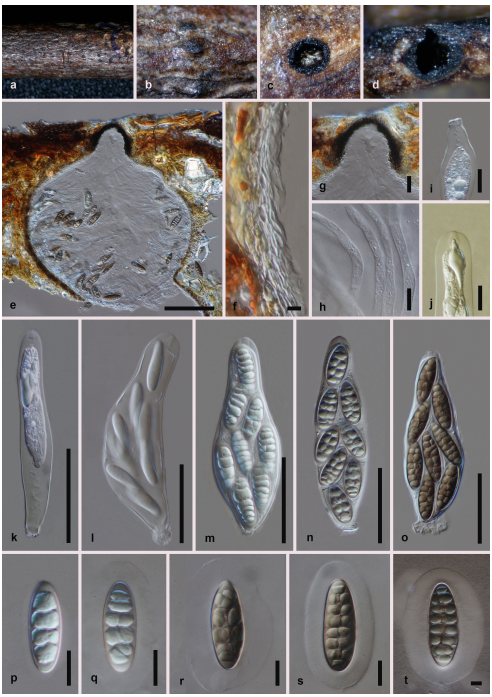
Acrocordiella yunnanensis (HKAS111922, holotype). a, b. Ascomata on host substrate c. Transverse section of an ascoma. d, e. Vertical sections of ascomata. f. Peridium g. Ostiolar neck. h. Paraphyses. i–o. Asci (j. in Melzer’s solution). p–t. Ascospores (t. in Indian ink). Scale bars: e = 100 μm, g, i, j. = 20 μm, k–o. = 50 μm, h, p–s. = 10 μm, t–f. = 5 μm.


